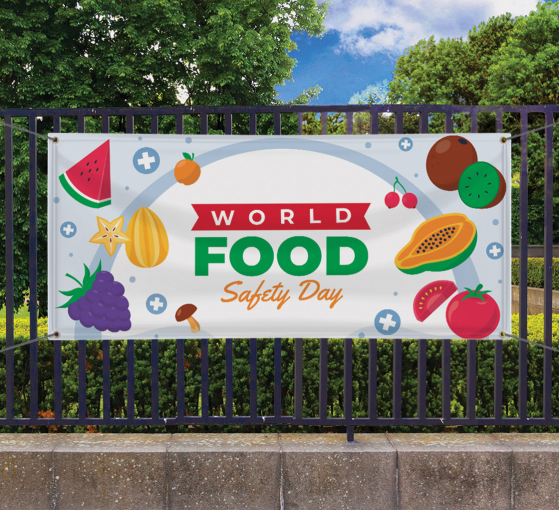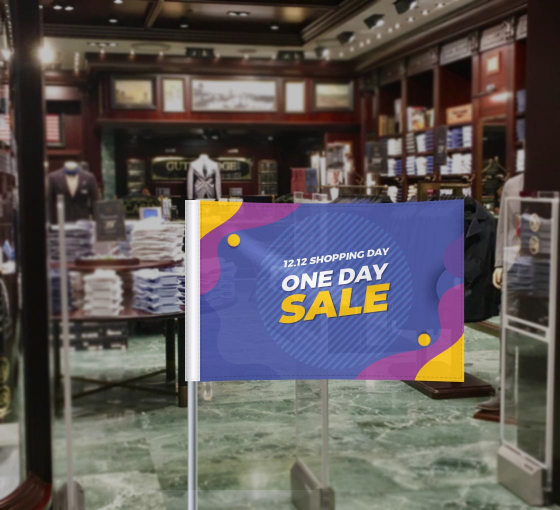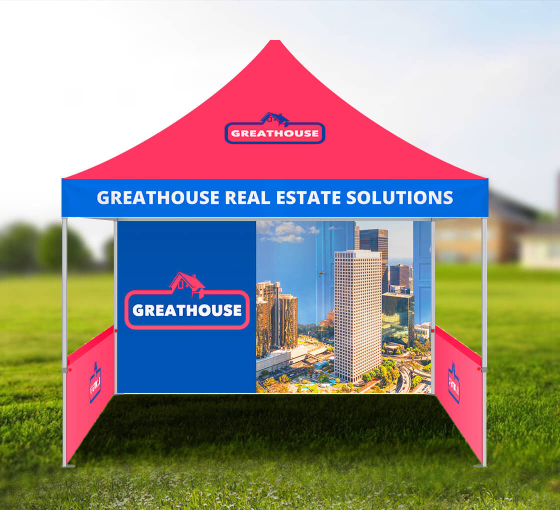When it comes to banner printing, one of the most critical factors that influence the quality, durability, and appearance of a banner is the material’s weight and thickness. A term that you’ll often encounter when selecting a banner material is GSM, which stands for “Grams per Square Meter.” Understanding GSM is essential for anyone looking to produce high-quality printed banners.
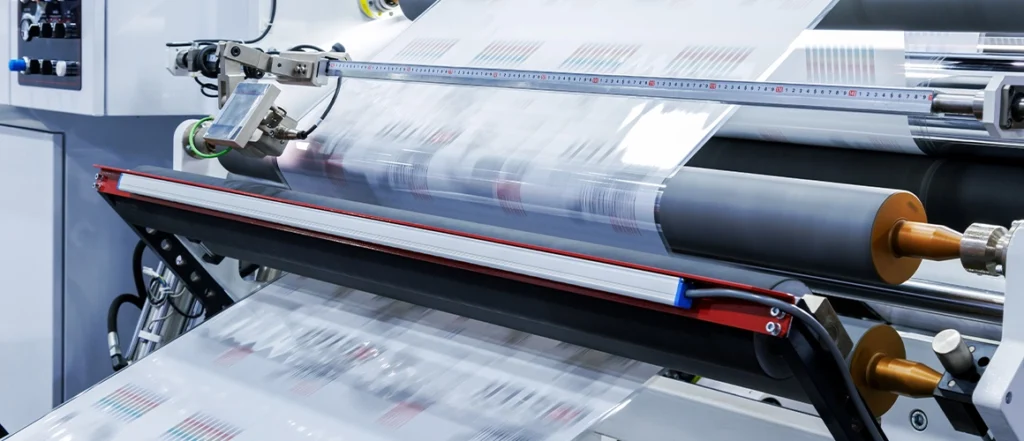
In this beginner-friendly guide, we will break down the concept of GSM, explain its significance in banner printing, and help you choose the right GSM for your specific needs. Additionally, we’ll offer a quick reference table with helpful tips to make your decision-making process easier.
What is GSM in Printing?
GSM (Grams per Square Meter) is a measurement that indicates the weight of a material based on how much one square meter weighs in grams. It’s commonly used in the paper, fabric, and printing industries to define the thickness and heaviness of different materials. A higher GSM usually signifies a thicker, denser material, while a lower GSM indicates a thinner, lighter one.
In banner printing, GSM helps define the durability, flexibility, and appearance of your printed banners. Understanding GSM is crucial because it influences the overall look and sturdiness of the finished product. Whether you’re designing vinyl banners for outdoor use or customized banners for indoor displays, GSM plays a key role in ensuring the banners meet your requirements.
Why GSM Matters in Banner Printing
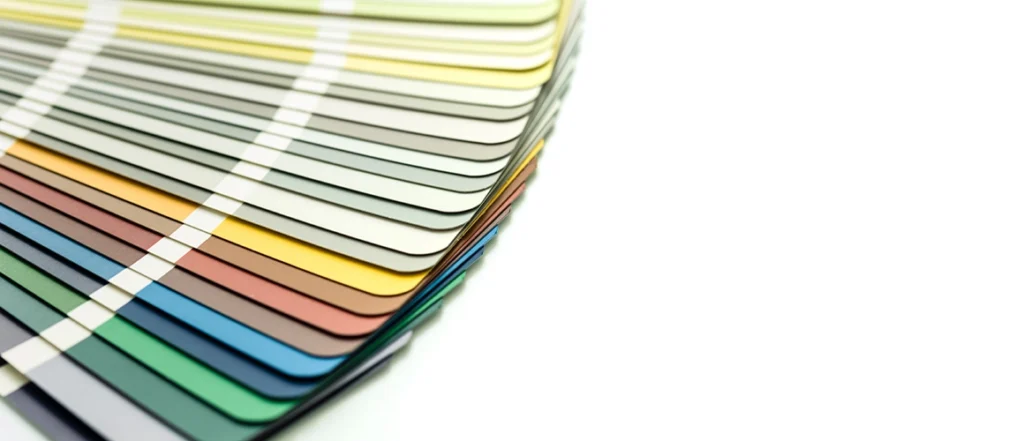
Printing banners with different GSM options is essential to achieve the desired quality. Various applications, whether indoor or outdoor require specific levels of durability, flexibility, and weight, all of which are directly influenced by the material’s GSM. Here’s why GSM is important in banner printing:
- Durability: A higher GSM means a thicker and more durable material, which is vital for outdoor banners that need to withstand elements like wind and rain.
- Appearance: Heavier materials often appear more premium and less likely to wrinkle, giving a professional look, which is critical for branding purposes.
- Weight: Heavier GSM materials, while durable, can also be more challenging to transport and install.
- Weather Resistance: Banners with higher GSM are typically more weather-resistant and last longer outdoors.
How to Choose the Right GSM for Your Banners
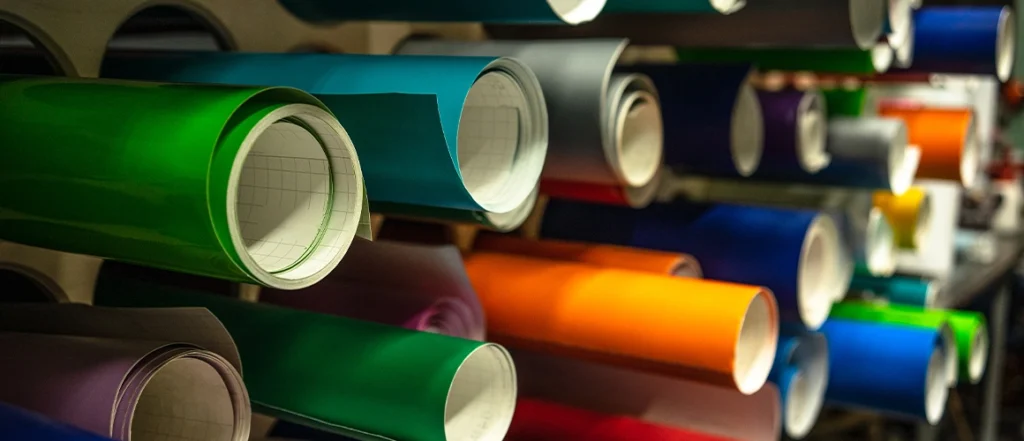
Choosing the right GSM depends on various factors, including the location of your banner (indoor or outdoor), the duration of use, and your budget. Let’s look at how you can make an informed decision:
1. Indoor vs. Outdoor Use
- Indoor Banners: Banners displayed indoors are not subject to harsh weather conditions, so they don’t need to be as heavy. A GSM between 150 and 300 is typically suitable for pop-up banners and other indoor displays.
- Outdoor Banners: For outdoor displays, durability is key. A GSM of 400 or higher is recommended to ensure that the banner can endure exposure to elements such as wind, rain, or sunlight.
2. Short-Term vs. Long-Term Use
- Short-Term Banners: If your banner is only needed for a short event, like a weekend promotion or a trade show, a GSM between 150 and 250 will suffice. These are lightweight, flexible, and cost-effective options for temporary displays.
- Long-Term Banners: For long-term use, such as permanent outdoor signage, you’ll want a GSM of 300 or higher. These banners are more resistant to wear and tear and offer a more polished appearance, which is important for creating a professional impression.
3. High-Quality vs. Budget-Friendly
- Premium Banners: If you’re aiming for a high-quality, professional look, a GSM of 300 to 450 is recommended. These banners offer great durability and a premium finish that can positively reflect your brand.
- Budget Banners: For more budget-friendly projects, a lower GSM (150-200) can work, especially for short-term indoor events. This keeps costs down while still delivering a functional banner.
Banner Material Weight Guide: Understand Thickness and Durability
While GSM measures material weight, banner thickness (often measured in mils, or thousandths of an inch) plays a crucial role in determining the banner’s strength and durability. The thicker the material, the more resilient it will be to tears, punctures, and weather-related damage.
- Thin Banners: Lower GSM materials are lightweight and easier to handle but may be prone to tearing, making them ideal for short-term or indoor use.
- Thick Banners: High-GSM materials are thicker, offering better durability and longer lifespan, especially in outdoor settings where conditions may be harsh.
Best GSM for Banners: A Quick Reference Guide
Here’s a general guide to help you choose the best GSM based on your specific banner needs:
| Scenario | Recommended GSM | Tip |
| Indoor Use | 150-300 GSM | Lighter GSM materials work well indoors and are more cost-effective. |
| Outdoor Use | 400+ GSM | Prioritize durability for weather resistance in outdoor environments. |
| Short-Term Display (Weekend Event) | 150-250 GSM | Lower GSM is suitable for temporary displays, saving on material costs. |
| Long-Term Display (Permanent Sign) | 300+ GSM | Opt for higher GSM to ensure longevity for long-term displays. |
| Windy Locations | 250-350 GSM (Mesh) | Choose mesh banners for windy conditions to avoid damage. |
| Budget Projects | 150-200 GSM | Balance cost and quality by using a lower GSM for short-term or indoor events. |
Common Banner Material Types and GSM
Here’s a breakdown of popular banner material types and their typical GSM ranges:
- Vinyl Banners: Vinyl is one of the most used materials for banners, known for its durability and weather resistance. Vinyl banners usually have a GSM range of 300 to 550, making them perfect for both indoor and outdoor use.
- Fabric Banners: Fabric banners tend to be lighter than vinyl, with a GSM range of 150 to 300. They are often used for customized banners that require a high-quality, elegant finish, commonly seen in trade shows or indoor promotional events.
- Mesh Banners: Mesh banners are designed with small holes to allow wind to pass through, making them ideal for outdoor settings, especially in windy conditions. They usually have a GSM range of 250 to 350.
Understanding GSM in banner printing is crucial for selecting the right material for your project. Whether you’re printing outdoor banners for a large event, pop-up banners for trade shows, or vinyl banners for a marketing campaign, choosing the correct GSM ensures that your banner performs as expected in terms of durability, appearance, and lifespan.
Use the guide and tips provided here to select the best GSM for your banner project. Whether you need a lightweight material for short-term indoor use or a heavier, more durable material for outdoor displays, you now have the knowledge to make an informed decision.
Written By Best of Signs Editorial Team

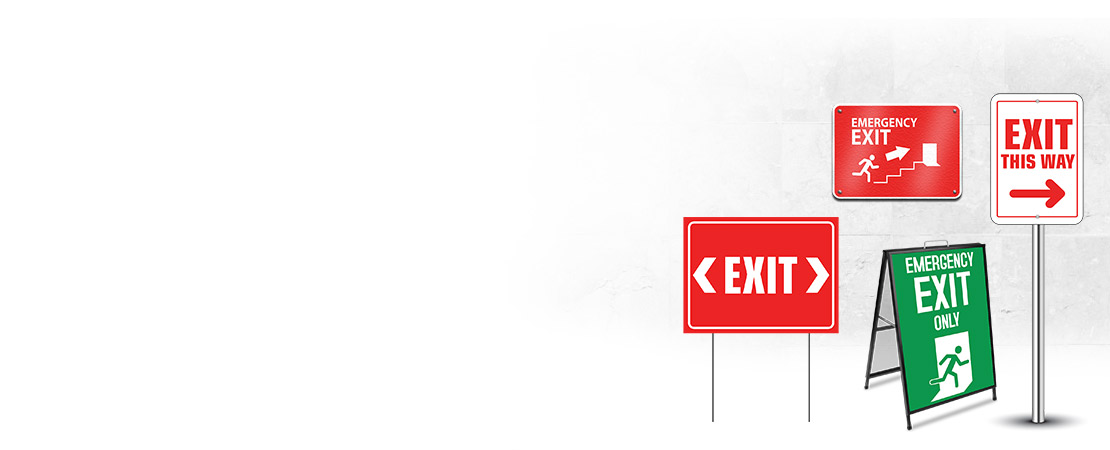





































 Posted in
Posted in 







